Viral Photo Shows Invisible Camouflaged Snake—How to Know Where They’re Hiding
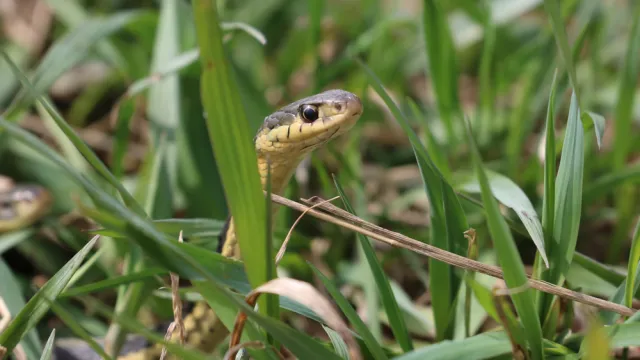
Snakes’ vital role in the ecosystem is often overshadowed by their misinformed reputation as dangerous or aggressive animals. Fortunately, most species are non-venomous, and these reptiles are also relatively shy by nature and go to great lengths to stay out of sight. But while that trait can help keep both humans and snakes safe from one another, their impressive ability to hide can also make it more challenging to avoid them. In fact, one viral photo shows just how hard it can be to spot a seemingly invisible camouflaged snake in nature. Read on to see how sneaky snakes can be.
READ THIS NEXT: Two Copperhead Bites Reported as Snake Season Begins—Here’s Where They Were Hiding.
A recently posted photo shows how challenging it can be to spot snakes in the wild.
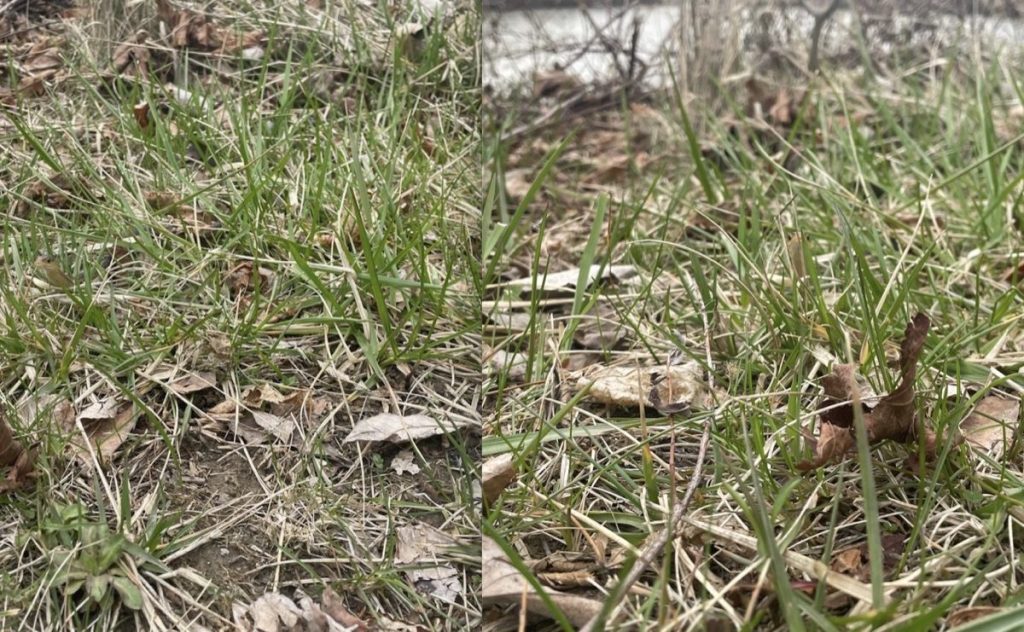
Whether tending to your garden or enjoying a hike, part of staying safe outdoors involves being aware of your surroundings and noting any signs of danger. But in a recent Facebook post, the Ohio Department of Natural Resources showed firsthand just how challenging it can be to make out a snake when they’re in nature.
The agency used two photos as an example. At first blush, the images appear to just show some fallen leaves and blades of grass. But those who look closely can spot the reptile practically hiding in plain sight.
“If you’re having a hard time finding the common garter snake in these pictures, don’t feel bad,” the agency wrote. “The snake’s camouflage is working!”
Snakes rely on this camouflage for both protection and help catching prey.
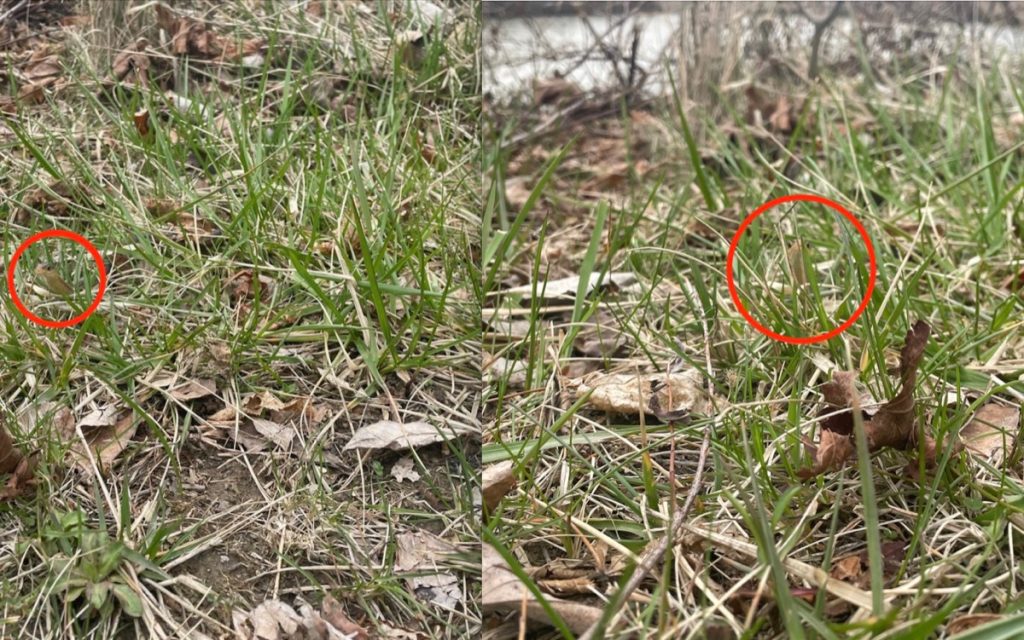
While the snake in the image is non-venomous, it’s clear—or perhaps, very unclear—that it takes a keen eye to pick up on the reptiles in their native habitat. According to experts, this has everything to do with the animals’ survival and their position in the food chain.
“Snakes rely on their camouflage to hide from both predators and prey,” Roger Dickens, technical bird and wildlife control expert with Ehrlich Pest Control, tells Best Life. “It’s an evolutionary adaptation to help be successful at catching prey while avoiding detection from predators—including from our earliest ancestors, primates.”
Dickens explains that aside from humans, most mammals have binocular vision that allows them to see with both eyes in only a tiny percentage of their overall vision range. While this helps them see a wider field of view to protect them from predators, it also shows their world as a flat image with little to no depth perception.
“A snake’s camouflage breaks up their bodily outline and helps them hide on the ‘flat image’ that a mouse sees,” Dickens says. “The lack of depth perception allows them to get within striking distance of their prey.”
For more outdoor advice delivered straight to your inbox, sign up for our daily newsletter.
There are a few ways to improve your chances of spotting a snake that’s hiding.
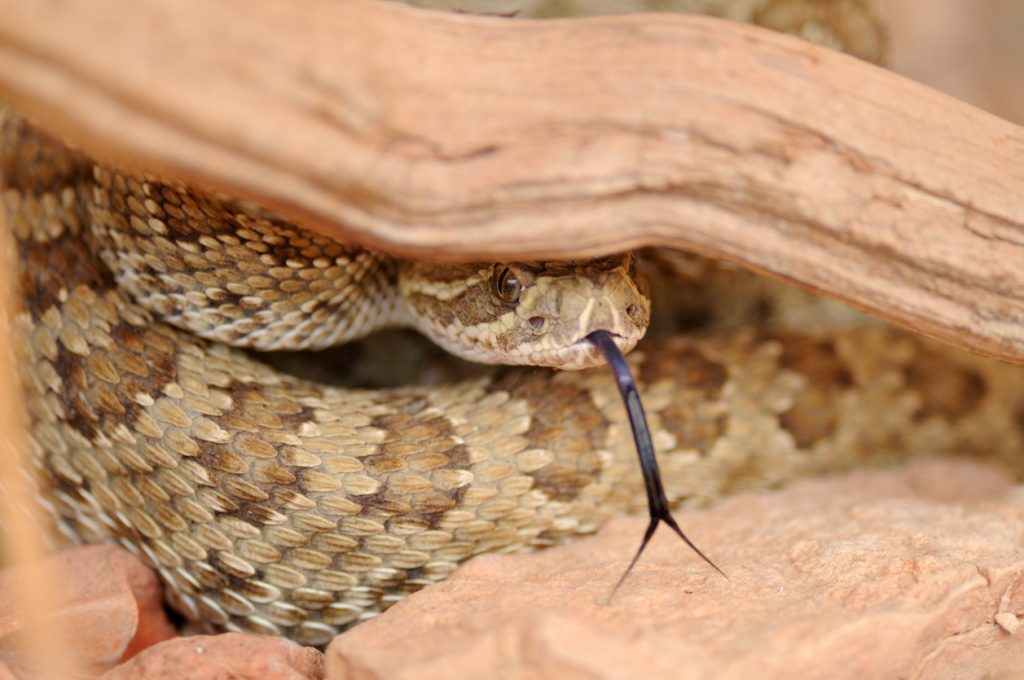
Besides making sure to get your vision checked, there’s not much you can do to improve your eyesight and your chances of spotting hidden snakes. But according to Dickens, human visual acuity is enhanced by movement, meaning it’s easier to see a snake moving than one that’s lying still.
“In this case, using a long stick to disturb areas under downed trees or other objects—such as a pile of firewood—to make a snake move will greatly increase our chances of seeing it before being bitten,” he suggests.
You can also rely on other senses besides your sight to stay safe. “Listen for warning signs,” says Georgina Ushi Phillips, DVM, a writer for The Reptile Room and a Florida-based veterinarian. “Snakes may hiss or rattle their tails as a warning before striking, so use your ears for any unusual sounds when walking in snake-prone areas.”
And even if you can’t always see far ahead, at least focusing on your immediate vicinity can help keep you safe.
“Always watch where you step,” Phillips advises. “Be aware of your surroundings and avoid walking through tall grass, rocky areas, or areas with dense underbrush where snakes may be hiding.”
These basic pointers can also keep you safe from snakes if your eyes fail you.
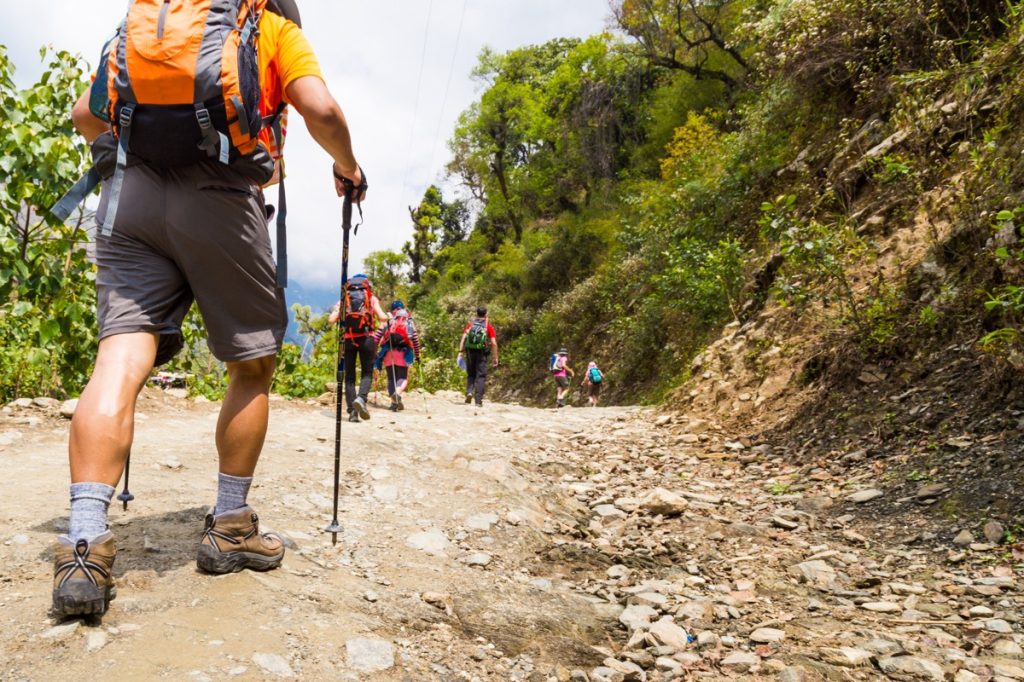
Even the most alert outdoors enthusiasts and gardeners can sometimes overlook a snake in their midst. That’s why experts say that following certain precautions can go a long way in keeping yourself safe.
According to Phillips, donning the right gear can provide some immediate protection in any unexpected close encounters. “Wear long pants, boots, and closed-toe shoes when hiking in snake-prone areas to reduce the risk of a snake bite,” she suggests.
It can also be essential to be more alert during different times of the day. “Snakes are more active during the early morning and late afternoon, so it’s best to avoid hiking during these times in snake-prone areas,” says Phillips.
And if you really want to keep the advantage of eyesight, you might not want to venture too far off the beaten path or into dense vegetation in your yard. “Stay on designated trails and avoid bushwhacking or exploring off-trail areas where snakes may be hiding,” Phillips cautions.